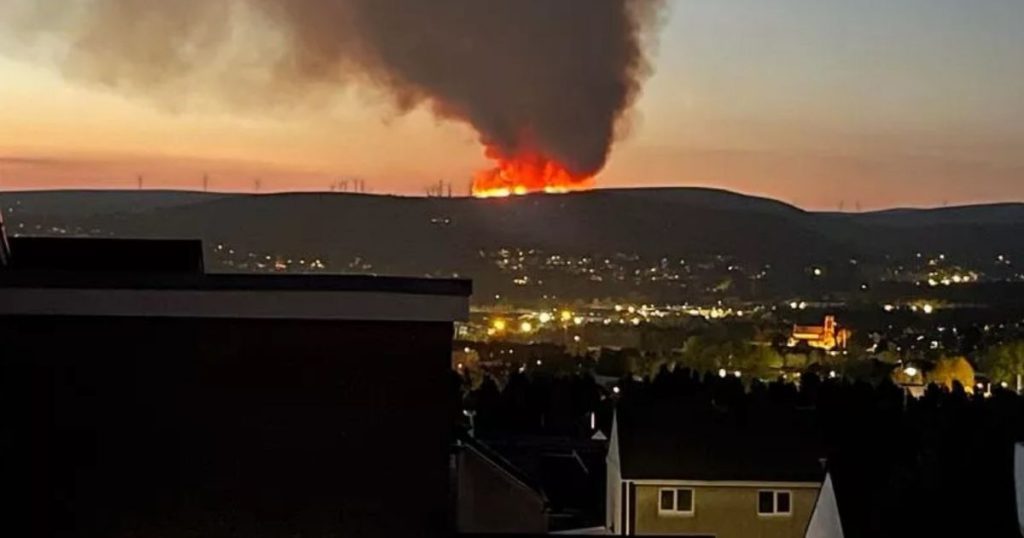Mid and West Wales Fire and Rescue Service responded to reports of a large blaze on Mynydd Gelliwastad, sending two fire engines and a 4×4 vehicle to the scene. Thick smoke billowed from the hill, with photographs showing fierce orange flames visible from miles away. The cause of the fire is unclear, but there is no suggestion that it was set deliberately. Grass fires, whether accidental or intentional, are common in the south Wales valleys, with crews frequently attending significant incidents that require multiple resources and partnerships with other agencies. Despite the efforts of firefighters, the blaze on Mynydd Gelliwastad appeared to have partially subsided by 10pm.
Mynydd Gelliwastad is a popular area for hikers, offering stunning views of the south Wales valleys and Swansea from its peak of 213 meters. Grass fires have been a recurring issue in the region, with South Wales Fire and Rescue Service responding to almost 80 deliberate incidents over the course of a single weekend in 2021. These fires often necessitate the use of multiple fire engines, specialist vehicles, and collaboration with law enforcement, Natural Resources Wales, and local authorities. The risk posed by such fires was demonstrated by incidents near Abercarn Station and in areas where livestock and property were endangered. Preventing and managing grass fires in the valleys present ongoing challenges for emergency services.
In a separate incident, a teenage girl was arrested at a school in Ammanford after an altercation that resulted in injuries to two teachers and a pupil. The circumstances that led to the stabbing have not been fully disclosed, and the investigation is ongoing. Such incidents highlight the importance of maintaining a safe and secure environment within educational institutions, ensuring the protection and well-being of students, teachers, and staff. Collaborative efforts between school administrators, law enforcement, and community members are crucial in addressing and preventing violence within school settings.
Responding to emergencies such as the fire on Mynydd Gelliwastad and the school incident in Ammanford requires a coordinated and swift approach from emergency services. Firefighters, police officers, and medical personnel work together to contain fires, provide medical assistance, and ensure public safety. The challenges involved in managing such incidents underscore the need for effective communication, resources, and training for emergency responders. Community awareness and support are also essential in promoting safety and preventing future crises in both natural and man-made disasters.
Ensuring the safety and security of public spaces, such as parks, schools, and recreational areas, is a shared responsibility among individuals, communities, and authorities. Preventative measures, including fire safety education, conflict resolution training, and emergency preparedness drills, play a significant role in reducing risks and enhancing the resilience of communities. Collaborative partnerships between emergency services, government agencies, and community organizations are vital in addressing complex challenges, responding to emergencies, and fostering a culture of safety and vigilance.
The incidents in Mynydd Gelliwastad and Ammanford serve as reminders of the unpredictable nature of emergencies and the critical role of emergency services in safeguarding lives and property. Adequate resources, training, and coordination are essential for effective emergency response and recovery. Prioritizing community safety, resilience, and communication are key components of building a comprehensive and proactive approach to emergency management. By working together and staying vigilant, communities can mitigate risks, respond effectively to crises, and enhance overall preparedness for future challenges.


